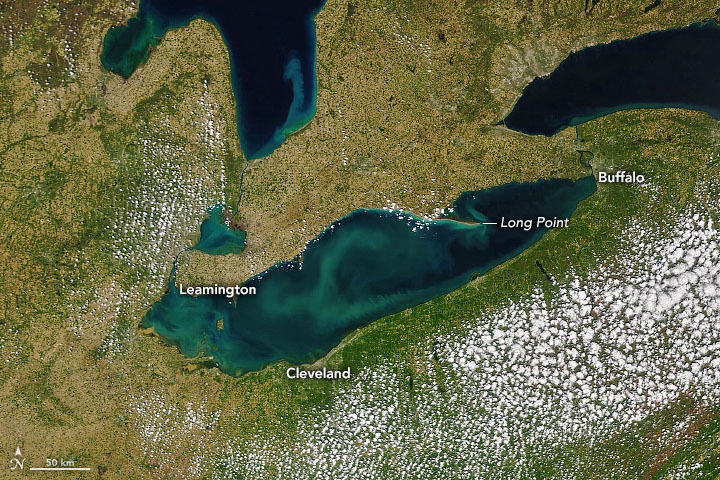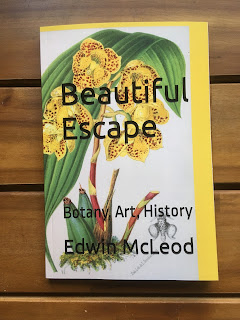Lovable Lawn
 |
| Glory of the Snow (Chionodoxa) |
Just because you can do something doesn’t mean you should do it. I could probably look like the Terminator if I took steroids and spent lots of time in the gym lifting weights, but I’d prefer not to have shriveled testicles. You could have a lawn that looks like a carpet, but you probably don’t want to expose yourself, family and pets to pesticides and all the negative environmental consequences that go along with using chemicals on your lawn.
One of the worst consequences of using chemical fertilizers is water pollution. Inorganic chemical fertilizers are very water soluble. A large percentage of chemical fertilizer ends up washing down into streams, rivers and lakes. The massive algae bloom that occurs almost every year in Lake Erie is primarily the result of chemical fertilizers used on lawns and farm fields. The overgrowth of algae not only kills fish, it also caused the City of Toledo, Ohio to close down their water system for several days in 2014. A blue green algae which produces the toxin, microcystin, polluted their drinking water. You couldn’t even brush your teeth with the water.
 |
| Algae bloom Lake Erie NASA Earth Observatory Image May 12-18, 2021 |
In this article, I want to explain how you can easily grow a beautiful, safe lawn. I won’t kid you. This does take a paradigm shift. Instead of desiring a plain monoculture of grass, grass, grass (which is extremely unnatural), you will be growing a lawn that looks like a flowering meadow that you will mow.
Basically, in order to grow a lawn that looks like a flowering meadow you need to do three things: In spring, spread some compost lightly over the lawn. Then sow clover seed. In fall, plant small, perennial, flower bulbs placed randomly about your lawn.
Why do this?
First: Sprinkling compost over your lawn will develop beneficial microbial life in your soil. Think of it like adding yeast when you are baking bread or making beer. You could also think of it as consuming a probiotic like yogurt or miso. You are adding beneficial microbes that will encourage healthy soil. This step is very important if your yard has been repeatedly sprayed or covered with inorganic chemical fertilizers and pesticides. Many cities have free compost available or you can purchase a bag of compost at a hardware or nursery.
Chemical lawn treatments kill soil life. Chemical lawns are dead and the grass root systems are shallow so an impenetrable thatch develops. A chemically treated lawn needs to be machine aerated so air and water can penetrate the thatch. In a healthy, organic lawn you don’t have to aerate with a machine because earthworms do the aerating for you. Also, a mixture of plant species, some having deeper roots, prevents the development of thatch.
Second: Planting clover in your lawn provides free fertilizer for years and years to your other lawn plants. Clover has nitrogen fixing bacteria growing in their roots. These bacteria take nitrogen out of the air and give it to the clover and surrounding plants.
For decades, the chemical companies have told you that clover is a weed. This is convenient for them because their weed killer that kills dandelions, also kills clover. They want to sell you fertilizer anyway. They don’t want you to get nitrogen for free from the clover. So it is perfect to just call clover a weed and not a beneficial plant producing free fertilizer for your lawn. In addition to free nitrogen, clover produces beautiful flowers you will enjoy.
Some people say they don’t want clover in their yard because it attracts honeybees. This may have been a concern in the past, especially for people allergic to bee stings. Today, we have such an extreme shortage of honeybees, especially in the city, that this worry is very minimum.
Third: When you change your outlook from a boring, plain old carpet of grass to a beautiful, flowering meadow, you will open up a whole new appreciation for the great variety of flowering plants. Flowers are especially welcome in the springtime after a long, cold, snowy winter. If you plant small perennial bulbs in your lawn in the fall, you will have an extraordinary display of gorgeous little flowers popping up in your lawn during the spring while the grass is still brown.
 |
| Dwarf Iris |
 |
| Scilla |
It does take some time on your hands and knees planting bulbs in your lawn. You might want to plant bulbs in your lawn one, two or three years in a row to get the flash of color you want in the spring. The greatest part of planting these bulbs is that they will continue to flower for years into the future. You don’t have to keep planting. Some beautiful, small, spring flowers you can grow in your lawn include: Crocus, Scilla/Squill, Snowdrops (Galanthus), Dwarf Iris, Grape Hyacinth (Muscari), Glory of the Snow (Chionodoxa), and Botanical Tulip. Check out hollandbulbfarms.com They are located in Wisconsin.
 |
| April 4 |
The bulbs flower in different phases so you will enjoy them over a month’s time; from early spring until the grass really starts to grow. These plants begin flowering in early spring so when they are done blooming, you just mow over them like you do a normal lawn - No big deal.
My spring flush of flowers ends with violets and dandelions. The purple violets and yellow dandelions really compliment each other. Some people have an irrational prejudice and hatred toward dandelions. Dandelions aren’t poisonous, don’t sting, and don’t have prickers. They are just really good at reproducing. Dandelions are apomictic - they can produce seed from ovules (eggs) that have not been fertilized. You can eat every part of a dandelion plant.
Many lawn care chemical concoctions used to kill dandelions, include the weed killer 2,4-D. The herbicide, 2,4-D was a component of the Agent Orange mixture used during the Vietnam war to defoliate the jungle. In 1996, President Clinton ordered that disability benefits cover veterans who served in Vietnam and suffered from prostate cancer and nerve damage associated with the defoliant Agent Orange.
Dandelions growing in my yard are just fine. I like to enjoy my dandelions rather than pollute the earth, air and water with weed killers.
Speaking of water. A diverse, flowering meadow like lawn requires much less water than a chemically treated lawn. The plain grass lawn fertilized with NPK chemical fertilizer does not develop a very deep root system. The chemical lawn is very poor at obtaining water so you almost have to water it every day. When the weather gets really hot and sunny, the grass dies out even with watering.
A big advantage of a natural, flowering meadow lawn is that it does not die out in the summer, even with very little water. When you have a variety of grasses and broadleaf herbs, the plants develop deeper root systems. Many of the broadleaf plants naturally have deeper root systems than grasses so when conditions get dry, they are still able to obtain water from deeper in the soil. Plants like clover continue to stay green even when the grasses are languishing in the summer heat. My goal is to see “green”. Green is good. I can see green without watering.
 |
| Clover and Star-of-Bethlehem |
I also save money by not watering my lawn. My local water bill rate has gone up over the last decade. Living in Michigan, we have plenty of water. The increased price is not so much for the water, but it is for the sewage treatment. (Sewage treatment is certainly important in preventing water pollution.) In our system, the more water you consume, the higher your bill. Watering a chemically treated, plain, boring grass lawn just doesn’t make sense.
I encourage you to grow a beautiful, flowering, meadow lawn this year. You will not only have a gorgeous yard, you will prevent pollution from chemical fertilizer and pesticides, and save money on your water bill. The gradual flush of blooming flowers in the early spring will bring you more joy than you can imagine. You will have a lovable lawn. Before you know it, you will be looking for additional small blooming perennial bulbs that you will want to add to your collection.
Thanks for reading. Please share this blog with a friend.
You might like to take a look at my most recent books. You can see them by clicking this link:
https://www.amazon.com/Edwin-McLeod/e/B08TCJTKSW?ref_=dbs_p_pbk_r00_abau_000000





nice
ReplyDeleteThe writing style of this article was captivating. It kept me hooked from start to finish. Well done!
ReplyDeletetarpaulins sheet
Very nice blog sir...
ReplyDeletebungee cords